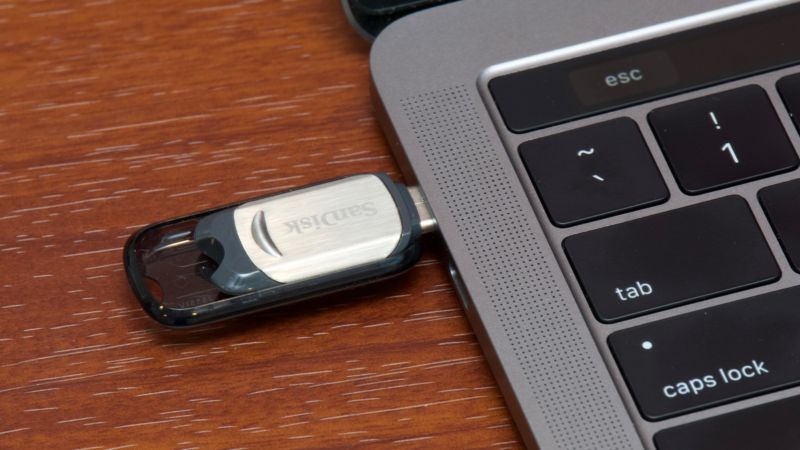- Catalina Bootable Disk
- Catalina Bootable Drive Mac
- Bootable Catalina Flash Drive
- Catalina Boot External Drive
- Catalina Bootable Drives
Until macOS 10.15 Catalina, Mac users knew: their startup volume was a single volume, just as it appeared! (Okay, for Fusion drive users, there are two physical drives managed by software to appear as a single “disk drive,” but that’s separate from the data organization that is a volume on a drive.)
As I wrote a couple of months ago, Apple relies on a feature in APFS (Apple File System) called “volume group.” This allows macOS to link together two separate volumes to appear as a single drive. Apple chose this method as a way to enhance security, putting read-only system files on one volume and your changeable data, home directory, preference files, and all the rest on another.
- A bootable version of the macOS Catalina installer is one of the often-overlooked tools a Mac user should have on hand before upgrading to or performing a clean install of Catalina. The bootable installer you create in this guide will be housed on a USB flash drive, but you can use any bootable device you may have lying around, including.
- If you search for “clean install macOS Catalina” on Google, you’ll find tons of articles walking user through the process of creating a bootable USB drive with an installer image source from Mac App Store.
But where does this leave you if you want to clone your startup volume and create a backup that can be used as a one-stop shop for restoring a failed drive or Mac, or which can be booted from? Fortunately, all the software you need is up to date.
How to create a bootable macOS Catalina 10.15 USB install drive. Step 1: Download macOS Catalina. After Catalina 10.15 launches later this fall, you’ll be able to download it directly from the. Bootable macOS Catalina USB on Windows 10. Use your USB drive right-click on it and select format disk format this will format the USB drive so that it can be used to store the Mac OS operating system. One thing you need to take care of that the USB drive needs in GPT partition in order to work on a Mac computer otherwise it won’t boot.

Time Machine correctly archives your entire startup volume (as well as other volumes you might specify), letting you restore a Catalina drive as you would a previous version of macOS.
Carbon Copy Cloner ($40) has supported making full clones that boot with Catalina since August 2019. If you haven’t used CCC in a couple of years, you need version 5 for Catalina support.
SuperDuper! ($28) released version 3.3 in November with full Catalina backup and boot support. Its maker, Shirt Pocket Software, has never charged for updates, so if you own any previous release you can download and use the latest version.
This Mac 911 article is in response to a question submitted by Macworld reader John.
Ask Mac 911
We’ve compiled a list of the questions we get asked most frequently along with answers and links to columns: read our super FAQ to see if your question is covered. If not, we’re always looking for new problems to solve! Email yours to mac911@macworld.com including screen captures as appropriate, and whether you want your full name used. Not every question will be answered, we don’t reply to email, and we cannot provide direct troubleshooting advice.
Catalina Bootable Disk
Using both Windows and macOS, and suddenly mac refuses to boot. The reason behind this can be from a number of things that could go wrong. This includes system failure, bad updates, power failure, hardware failure. Unless there is a hardware problem that only can be diagnosed at the apple center you can fix your Apple computer.
It is an excellent practice always to have a bootable macOS USB, which you can easily create using macOS operating system. But since we’re here, you probably can want to make bootable USB using Windows 11 and 10. Let’s be real, and there are more Windows computers compared to MAC. Fortunately, you can use a Windows computer to create a bootable USB flash drive.
In this article, we’ll help you with the instructions to create a bootable macOS USB installation media from a Windows computer. So that you can use that USB to install or reinstall (upgrade) Apple’s macOS. You can create a macOS Catalina/sierra bootable USB using this guide to fix your operating system.
What’s needed?
You will need a few things before you get started. The first essential thing in it is a USB drive would be awesome if you use a USB 3.0, but you can get the work done using a slow USB as well. So, in contrast, you need the following things.
- One high-quality USB flash drive with 16GB of storage.
- TransMac software.
- MacOS operating system image (DMG file).
How to Create a macos Catalina bootable usb

The guide is simple and straightforward if you follow these steps.
Download and install TransMac on your Windows PC. It’s paid software with a 15-day trial, so you can use it within the time to create a bootable macOS USB flash drive. If you like the software and to support the developer you can buy the full version.
Plug the USB drive into your Windows computer that you’ll be using to fix your MacOS. And we are going to tell you something straightforward – backup if things are stored in USB Drive.
Step 1. Open the TransMac, and select Run as administrator. If you’re using the trial version, wait 15 seconds, and click Run.
Step 2. Use your USB drive right-click on it and select format disk format this will format the USB drive so that it can be used to store the Mac OS operating system. One thing you need to take care of that the USB drive needs in GPT partition in order to work on a Mac computer otherwise it won’t boot.
When it prompts select a name for your USB it doesn’t matter but just do it and click ok. If the formatting is completed successfully, click OK to continue.
Step 3. Again from the left sidebar right-click on the USB drive and select restore with disk image.
Step 4. Now browse to the location where the Mac OS system image file is located and click ok to load it.
Step 5. Click Yes to create the macOS USB bootable media.
It will take a few minutes to complete the process because the Mac Operating System is larger than any other operating system like Windows and LINUX in size. Now plug the USB drive into Mac computer in order to install, install or upgrade the operating system to the latest version of Mac OS, which can be Sierra or later.
Catalina Bootable Drive Mac
THE TOOL CAN
- Apple File System (APFS) volume read support.
- Open Mac APFS/HFS/HFS+ format disk drives, flash drives, CD/DVD/Blu-ray media, HD floppies, dmg, dmgpart, sparsebundle and sparseimage files.
- Copy files to Mac HFS+ disks and dmg images.
Format as HFS+ for Mac . - Save and restore images of disks and flash drives.
- Create, compress, expand and split dmg files.
- Built in burner functionality to burn ISO and dmg files directly to CD/DVD/Blu-Ray.
- Read Mac multisession and hybrid CDs.
- View partition layout.
How to create a GPT partition on a USB flash drive
Bootable Catalina Flash Drive
If the USB flash drive is not working using TransMac, it could be still a partition problem. In this case, you want to redo the entire process again, but this time use the following steps to use the Diskpart command-line utility on Windows to create the appropriate GPT partition.
- Open Command Prompt as an administrator. Type cmd in run dialog or open it from the start menu.
- Type the diskpart command and press Enter. This will display that is connected to your computer.
- Enter the list disk command to view all drives connected to your computer and press Enter. This command will show all of the partitions inside of a disc.
- Type the select disk command followed the number assigned for the USB flash drive (e.g., select disk 4), and press Enter. This command will select the disc partition of your choice.
- Enter the clean command and press Enter. This erases and formats the disc.
- Type the convert GPT command and press Enter. This convert master boot record to new GPT.
- Enter the create partition primary command and press Enter to complete the process.
Quickly create a macOS bootable USB on Windows
Now make a bootable USB using the TransMac software (follow instructions that are given above). Now connect the USB and power on your Mac computer while holding the option key and then select the USB Flash media to run the installation.
Catalina Boot External Drive
Learn using USB on MAC (Apple support page)
Learn more about making bootable USBs.
Make a bootable USB of Windows, Linux, Chrome and Android OS
Windows 10 Media creation tool Download and Creating Bootable USB Media
Catalina Bootable Drives
Article Contents